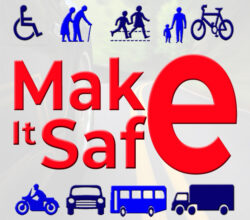How to stay safe as a passenger in a public bus or taxi.
As an adult passenger in any vehicle, even one that’s not your own, you should take personal responsibility to ensure you’re travelling safely.
Ensuring Safety for Public Service Vehicle Passengers
When using public service vehicles such as buses, trains, trams, or taxis, it’s important to prioritize your safety as a passenger. While you may not have control over the vehicle itself, you can take certain steps to enhance your safety and well-being. Here are some guidelines to follow:
1. Use Designated Boarding Areas: Wait for the vehicle at designated stops or stations. Avoid standing too close to the edge of roadways, especially when the vehicle is approaching or departing.
2. Mind the Gap: When boarding or exiting a public service vehicle, pay attention to any gaps between the curb and the vehicle. Step on and off the vehicle carefully, ensuring your footing is secure.
3. Follow Instructions and Announcements: Listen to any instructions or announcements made by the vehicle operator or conductor. They may provide important safety information or guidance during the journey.
4. Secure Your Belongings: Keep your personal belongings secure at all times. Use bags that can be closed and held securely to prevent theft or loss. Avoid displaying valuable items that might attract unwanted attention.
5. Hold Handrails or Grab Handles: When standing in a moving vehicle, hold onto handrails or grab handles for stability. This helps you maintain balance and reduces the risk of falling or getting injured in case of sudden stops or movements.
6. Pay Attention to Surroundings: Stay aware of your surroundings while in the vehicle. Be mindful of other passengers and any potential hazards. If you notice any suspicious or unsafe behaviour, inform the vehicle operator or relevant authorities.
7. Be Respectful of Others: Respect other passengers’ personal space and avoid any behaviour that may cause discomfort or conflict. Treat fellow passengers and staff with courtesy and kindness.
8. Secure Seatbelts (if available): If the public service vehicle is equipped with seatbelts, make sure to buckle up. Seatbelts provide an added layer of protection in case of sudden stops or collisions.
9. Report Safety Concerns: If you notice any safety issues, such as malfunctioning equipment, damaged seating, or unsafe conditions on the vehicle, report them to the operator or relevant authorities as soon as possible. Your feedback can contribute to the improvement of safety standards.
10. Emergency Exits: Familiarize yourself with the location of emergency exits and evacuation procedures on the vehicle. In case of an emergency, remain calm and follow the instructions of the operator or conductor.
11. Travel during Off-Peak Hours (if possible): If feasible, consider travelling during off-peak hours when public service vehicles are less crowded. This may offer more space and potentially reduce the risk of accidents or incidents.
12. Stay Informed: Stay updated on any service disruptions, delays, or changes in public service routes or schedules. Utilize reliable sources such as official websites, mobile applications, or information boards at stations or stops.
Remember, while using public service vehicles, your safety is a shared responsibility between the passengers, vehicle operators, and authorities. By following these guidelines and staying vigilant, you can contribute to a safer and more enjoyable journey for yourself and your fellow passengers.
![]()
